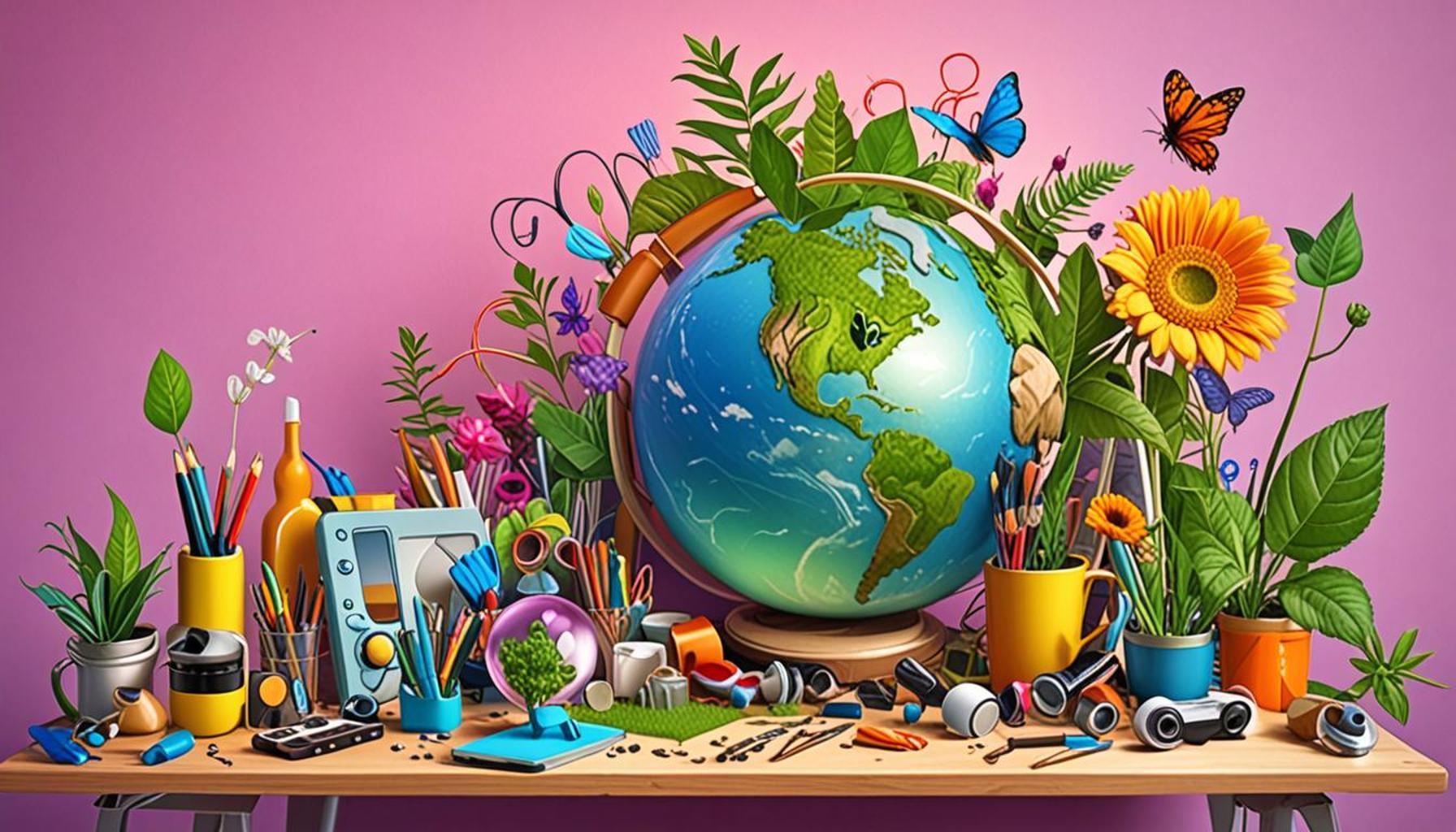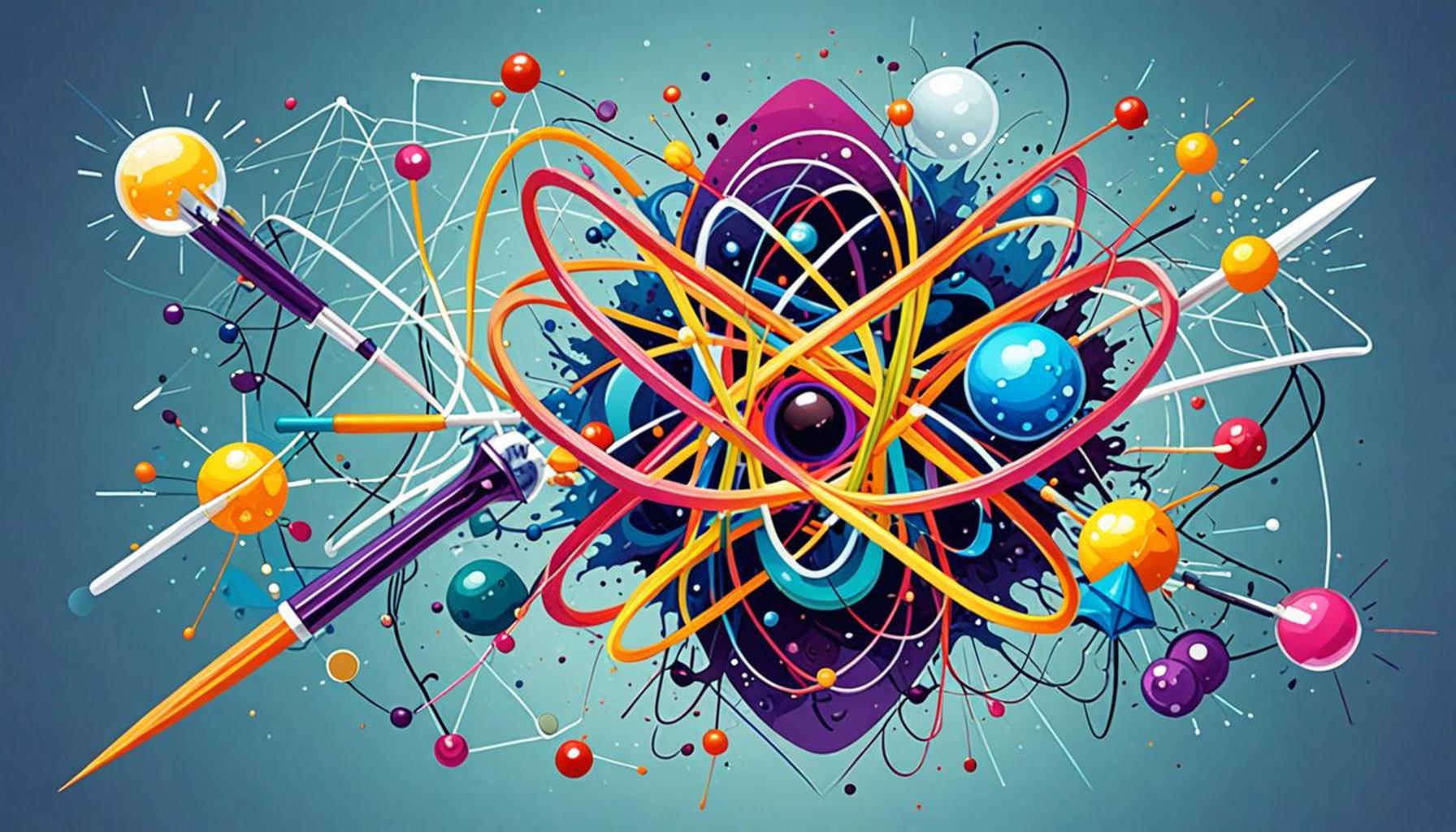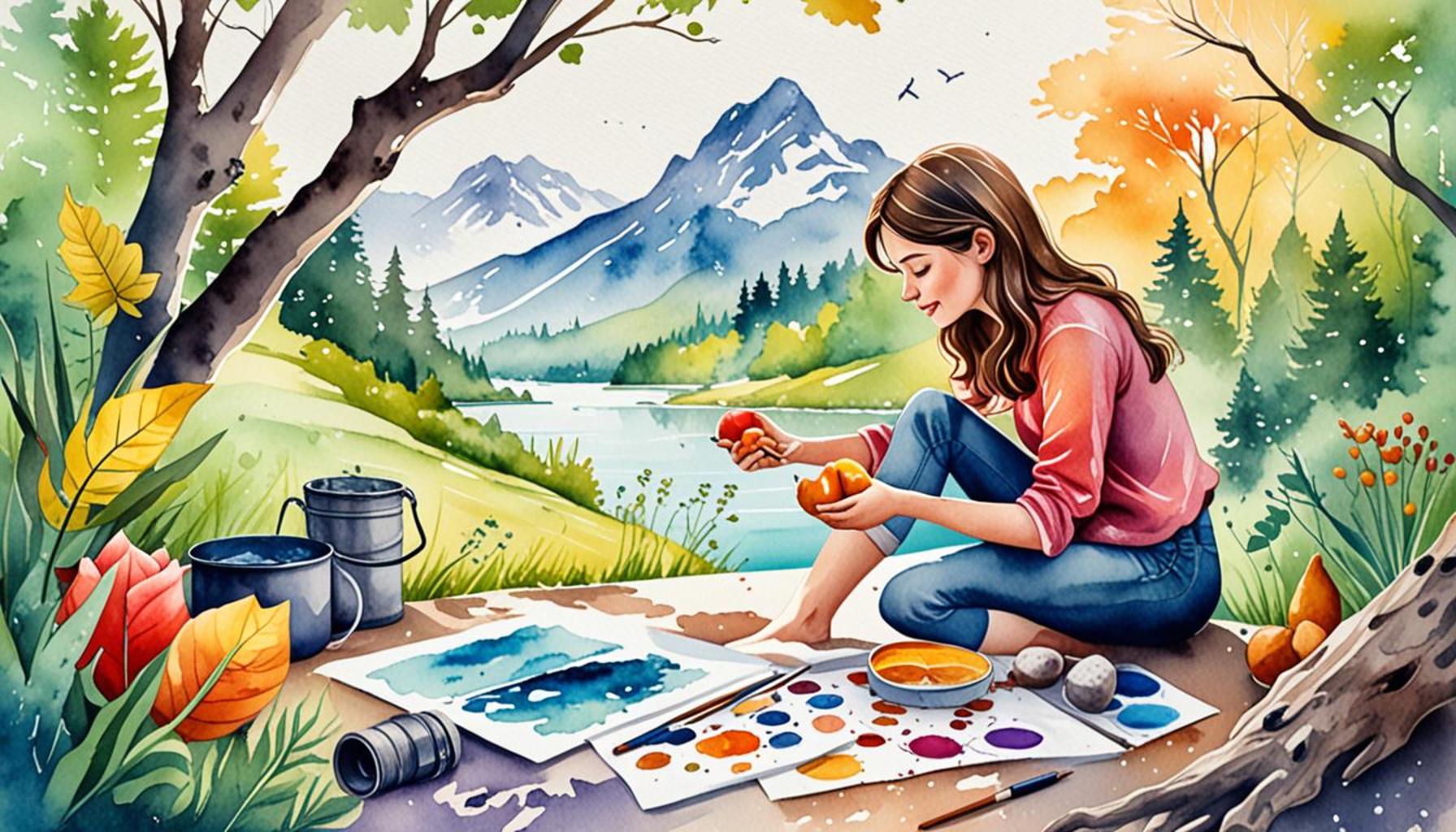The Influence of Digital Art: How Technology is Redefining Creative Arts as Hobbies
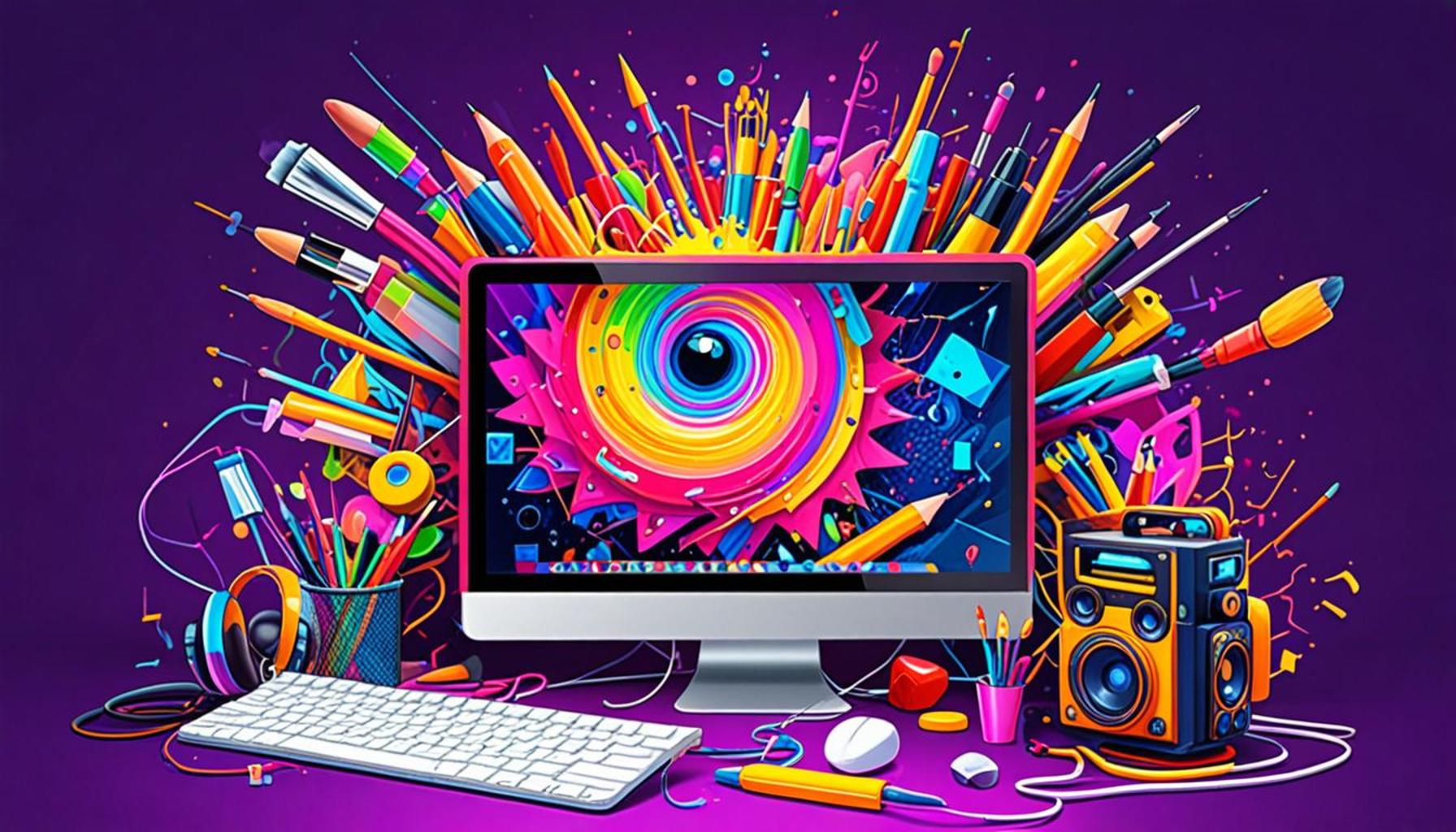
The Transformation of Creative Pursuits in the Digital Age
The rapid evolution of technology has dramatically transformed creative pursuits, particularly in the realm of visual arts. Digital art stands at the forefront of this revolution, influencing the way artists express themselves and how audiences engage with visual culture. Today’s designers and hobbyists wield powerful tools that make art more accessible than ever, breaking down barriers previously presented by traditional mediums and methods.
Consider these compelling features of digital art:
- Accessibility: With the advent of software on various devices—from tablets to smartphones—art can now be created and shared from virtually anywhere. This shift allows aspiring artists to experiment without the need for expensive materials or formal training, opening the door for a wider demographic to explore their creativity. Applications like Procreate or Adobe Fresco offer intuitive interfaces, enabling anyone to create impressive works right from their living rooms.
- Versatility: Digital artists enjoy access to a plethora of mediums and tools, ranging from traditional paint to advanced 3D modeling software. This versatility fosters innovation as artists blend techniques, creating unique styles that challenge conventional categorizations. For instance, 3D sculptors use digital modeling software like Blender to craft virtual environments that can be used in video games or animated films, showcasing how technology ignites imagination.
- Community: Online platforms such as Instagram, DeviantArt, and Behance stand as vital hubs for artists, allowing them to connect, collaborate, and showcase their work on a global scale. These platforms not only foster community but also provide valuable feedback and potential networking opportunities that were once limited to physical spaces. For example, collaborative projects between artists across countries have led to international exhibitions, highlighting the unifying power of technology in the arts.
The rise of digital art is redefining creative practices across the United States. No longer confined to galleries and dedicated studios, art has permeated everyday life, encouraging individuals from all walks of life to experiment with their creativity in the comfort of their own homes. From painting murals on virtual canvases to creating intricate animations, the field offers a diverse array of opportunities.
As technology continues to advance, it paves the way for a new era of self-expression. With tools available at our fingertips, anyone can immerse themselves in artistic exploration. This dynamic landscape invites both seasoned artists and novices to embrace digital creativity, revealing endless possibilities for artistic expression. Moreover, organizations such as the Adobe Creative Residency provide mentorship and financial support, helping emerging creators flourish in their artistic journeys.
In conclusion, the intersection of technology and creativity has redefined the boundaries of art, encouraging new generations of artists to explore, experiment, and engage with a global audience. As we continue to navigate this exciting landscape, it becomes evident that the fusion of innovation and imagination holds infinite potential for the future of artistic endeavors.
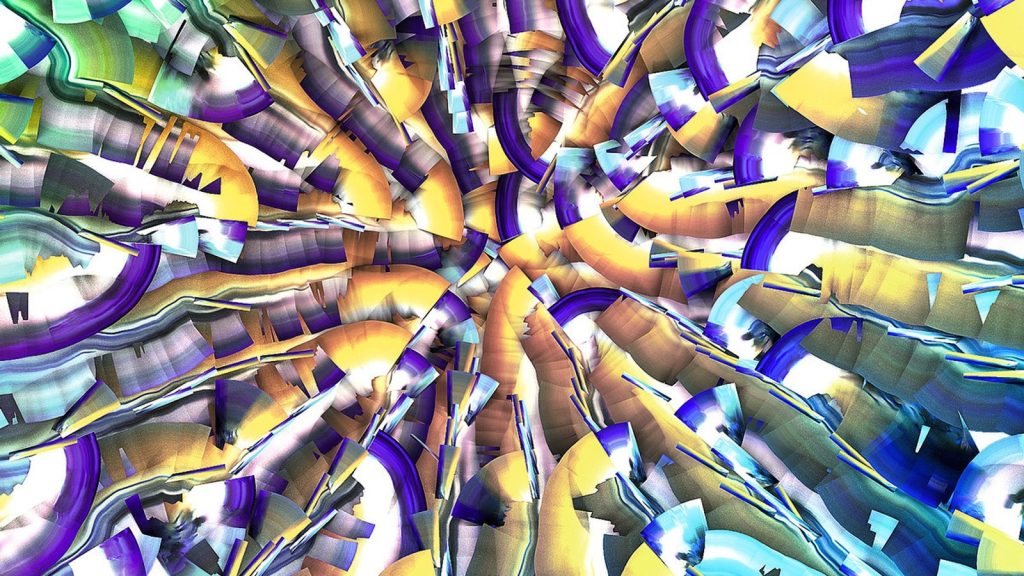
DISCOVER MORE: Click here to delve into the art of nature photography
The Rise of Digital Art Platforms and Tools
The proliferation of digital art tools has not only democratized creativity but also reshaped the landscape of artistic expression. With the right technology, anyone can tap into an impressive arsenal of resources that were once the domain of professional artists. Various applications and online tools have emerged, each designed to cater to different aspects of the creative journey. These platforms empower users, enabling them to create, share, and receive feedback on their work, fundamentally redefining how art is approached as a hobby.
One of the hallmarks of this digital revolution is the extensive range of software and applications available to hobbyists. Popular programs like Adobe Photoshop and Corel Painter offer sophisticated functionalities that mimic traditional techniques while also introducing unique features that enhance the creative process. Moreover, with options like Affinity Photo, which provides a cost-effective alternative to Adobe products, hobbyists can access high-quality tools without breaking the bank. As a result, the barrier to entry for aspiring artists has been lowered significantly.
In addition to standalone software, numerous web-based platforms allow users to create art collaboratively. Tools like Canva and Figma make it easy for anyone to design with a simple drag-and-drop interface, fostering a space where creativity is accessible regardless of skill level. These innovations mean that individuals can begin their artistic endeavors without needing extensive backgrounds in fine arts or years of formal training.
- Social Media Integration: Digital art is inherently social. Many artists utilize platforms such as Instagram, where they can showcase their creations to a vast audience, cultivating a following and gaining recognition. This exposure encourages a sense of community, as artists share tips, techniques, and inspiration with one another.
- Continuous Learning Opportunities: Online resources, including tutorials, webinars, and forums, allow hobbyists to continually learn and improve their skills. Websites such as Skillshare or Udemy offer courses in digital art, making expert knowledge available to anyone eager to enhance their craft.
- Interactive Artwork: The digital world has birthed a new canvas for artists—interactive or animated art. Tools like Adobe Animate allow users to create dynamic pieces that engage viewers in ways traditional art cannot. This innovation invites a different kind of appreciation and broadens the definition of what art can be.
The shifts in creative arts facilitated by technology go beyond mere accessibility; they have transformed the very essence of what it means to be an artist or a hobbyist. Digital art provides limitless possibilities for self-expression, enabling users to experiment without fear of failure. As individuals practice and refine their techniques, they cultivate a unique voice that celebrates personal experience while embracing a broader artistic dialogue.
Furthermore, the culture of sharing and collaboration that arises from digital platforms fosters a rich environment where feedback and mentorship thrive. Many emerging artists can find guidance and encouragement from established professionals, creating a cycle of learning and support that benefits the entire creative community. As more people engage with digital art, the perception of creative pursuits continues to evolve, signaling a transformative era for hobbies encompassing artistic expression.
The Impact of Digital Tools on Artistic Expression
The emergence of digital art tools has significantly transformed how artists create, allowing for greater experimentation and diversity in creative expression. Artists today have access to an array of software and hardware that provides limitless possibilities. Programs like Adobe Photoshop and Procreate enable users to manipulate images and create breathtaking visuals, expanding the scope of traditional art forms into the digital realm.
Moreover, the rise of digital platforms has democratized the creative arts, making it easier for individuals from various backgrounds to engage in artistic pursuits as hobbies. This accessibility has led to the emergence of vibrant online communities where artists can collaborate, share their work, and gain instant feedback from a global audience.
The Role of Social Media in Art Promotion
Social media plays a crucial role in promoting digital art, with platforms like Instagram, Pinterest, and Behance serving as virtual galleries. These platforms enable artists to reach wider audiences beyond geographical limitations, fostering connections that may not have been possible in traditional art settings. The instantaneous nature of social media transforms how art is appreciated, critiqued, and consumed, creating a dynamic that keeps evolving with technology.
This shift not only benefits artists seeking feedback but also enriches the experience for art enthusiasts who can now engage with artists directly, providing them with insights into their creative processes. As this trend continues, the line between artist and audience is blurring, creating a new collaborative culture in the creative arts.
| Advantages | Influence on Hobbies |
|---|---|
| Accessibility | Technology enables a wider audience to create and share |
| Collaboration | Online platforms foster partnerships and learning |
Through the lens of technology, it’s evident that digital art not only redefines artistic expression but also reshapes the landscape of hobbies, encouraging more individuals to explore their creative potential.
DISCOVER MORE: Click here to delve into the future of digital art
The Expanding Community of Digital Artists
The influence of digital art technology extends beyond the tools themselves; it encompasses the vibrant community that has emerged around these creative practices. The global reach of the internet enables artists from various backgrounds and locations to connect, collaborate, and inspire one another. Online communities and forums such as DeviantArt and ArtStation serve as platforms where budding artists can showcase their work, receive constructive criticism, and forge valuable connections with peers and mentors alike. This communal approach to artistry has vastly altered the traditional perceptions of the solitary artist, allowing for a more collective and shared experience in the pursuit of art.
Social media platforms specifically designed for visual content, such as TikTok and Pinterest, further bolster this sense of community. Short-form content sharing allows artists to display their creative processes, from initial sketches to finished products. Through these platforms, creators can go viral, instantly reach large audiences, and garner support, shaking off the old paradigm that often placed artists in niche categories. The accessibility of digital art fosters an environment where anyone can find their niche, guiding amateur creators to develop their own unique styles and gain recognition.
- Inclusivity and Diversity: The rise of digital art has paved the way for a more inclusive artistic landscape. No longer is artistic capability dictated solely by formal training or socioeconomic status; hobbyists from varying demographics can contribute to the cultural tapestry. This diversity in expression enriches the creative arts, giving voice to stories and perspectives that have historically been underrepresented.
- Micro-Communities: Niche groups focused on specific art styles or themes are proliferating. For instance, platforms like Tumblr host micro-communities dedicated to particular genres, fandoms, or art styles, fostering hyper-focused collaborations that produce intricate and detailed artwork. Such focused collectives push artists to harness their passions further, elevating their skills and providing a sense of belonging.
- Challenges and Support: Engaging in digital art can also lead to challenges, such as the pressure to remain relevant or the fear of comparison. However, many communities actively promote wellness and healthy artistic practices. Through support forums, artists share their experiences with artist burnout and imposter syndrome, creating safe spaces where mental health is prioritized in the creative process.
Moreover, digital art has begun influencing various sectors outside of traditional art, including education, marketing, and design. Schools are incorporating digital art tools into their curricula, equipping the next generation with essential skills that are increasingly valued in a technology-driven world. As creativity burgeons in fields like graphic design and advertising, the demand for skilled digital artists continues to rise, further validating the pursuit of art as a viable and respected hobby. This expansion into professional realms not only offers pathways for aspiring artists but also acknowledges the invaluable contributions these creative minds make to society at large.
As digital artistry continues to evolve, so too does the dialogue surrounding hobbies and creative expression. The effects of technology on art are multifaceted; personal creativity is no longer bound by traditional expectations or limitations. Instead, it is a dynamic blend of innovation and community, creating an ecosystem where anyone can be a creator. With countless opportunities at their fingertips, it is clear that individuals engaging in digital art as a hobby are answering a call for self-expression that transcends conventional boundaries.
DISCOVER MORE: Click here to dive deeper
Conclusion
The rise of digital art has significantly transformed the landscape of creative hobbies, making art more accessible, inclusive, and community-focused than ever before. With technology serving as a powerful enabler, artists from all walks of life can now express themselves freely and connect with others who share their passions. Online platforms have created a vibrant ecosystem where the dialogue surrounding creativity thrives, paving the way for collaborations and innovations that were once unimaginable.
In this new era, the implications extend beyond personal enjoyment; they touch on cultural and societal shifts that embrace diversity and representation. As digital art penetrates various industries, including education, marketing, and design, we see a growing recognition of its value as both a hobby and a professional pursuit. Digital artists are not just creators but also educators, trendsetters, and advocates for mental wellness within their communities.
The accessibility of tools and resources has leveled the playing field, allowing individuals to explore and hone their talents without being limited by traditional barriers. As we reflect on the impact of technology on creative arts, it becomes evident that digital art is not just a trend but a lasting change that encourages self-expression and ushers in new perspectives. For those looking to tap into their artistic potential, the world of digital art offers endless possibilities—inviting everyone to embark on a journey of creativity unbounded by conventions.
